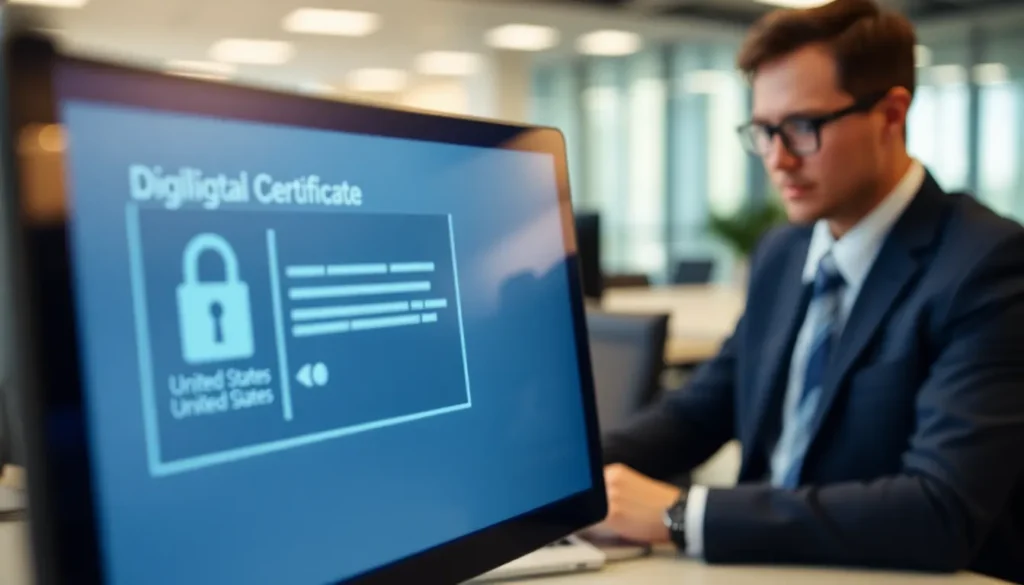Table of Contents
ToggleIn a world where cyber threats lurk around every digital corner, staying secure is no longer just a good idea—it’s a necessity. Imagine leaving your front door wide open while you sip coffee in your living room. That’s what navigating the internet without security best practices feels like. It’s time to lock that door and install a virtual security system that even the most cunning hackers can’t crack.
Understanding Security Best Practices
Security best practices encompass a range of strategies designed to protect information and systems. Implementing strong, unique passwords for all accounts remains foundational. Two-factor authentication provides an additional layer of security, significantly reducing unauthorized access risks. Keeping software, including operating systems and applications, updated helps patch vulnerabilities that cyber attackers exploit.
Regular data backups ensure recovery from breaches or data loss incidents. Encrypting sensitive data protects it during transmission and storage. Using firewalls and antivirus software safeguards against external threats and malware. Educating employees about phishing scams enhances overall security awareness, reducing the likelihood of successful attacks.
Physical security measures, such as securing devices and restricting access to sensitive areas, complement digital strategies effectively. Monitoring network activity allows for early detection of suspicious behavior. Conducting regular security audits identifies weaknesses in security protocols and controls.
Adopting a layered security approach fortifies overall defenses. Each layer provides an additional obstacle against potential intruders. Establishing comprehensive incident response plans prepares organizations to respond swiftly to security breaches, minimizing damage. Following these best practices positions individuals and organizations to mitigate risks effectively against evolving cyber threats.
Importance of Security Best Practices

Security best practices play a vital role in protecting digital assets from various cyber threats. Implementing these measures ensures organizations safeguard sensitive information and maintain trust with stakeholders.
Risk Management
Managing risks effectively is crucial for reducing vulnerabilities. Identifying potential threats helps prioritize security controls. Organizations must evaluate their security posture regularly to stay ahead of emerging risks. Incorporating risk assessments into security strategies strengthens defenses against data breaches. Continuous monitoring of systems provides insights into existing weaknesses. Adopting a proactive stance enables timely responses to potential incidents. Overall, robust risk management minimizes exposure to cyber threats.
Compliance and Regulations
Compliance with regulations strengthens security frameworks. Various standards, such as GDPR and HIPAA, mandate specific security measures to protect sensitive data. Adhering to these regulations mitigates legal risks and penalties. Organizations not only demonstrate transparency but also build credibility with clients. Regular compliance audits ensure alignment with industry standards. Keeping up with evolving regulations is essential for maintaining compliance. Implementing best practices facilitates smoother audits and establishes a culture of accountability.
Implementing Security Best Practices
Implementing strong security best practices enhances protection against cyber threats. Proactive measures reduce vulnerabilities and safeguard digital assets.
Employee Training and Awareness
Training employees significantly improves security awareness. Regular sessions create a culture of vigilance against potential threats. Engaging workshops help staff recognize phishing attempts and social engineering tactics. Informative materials, such as newsletters, keep security top of mind. Encouraging open discussions about security incidents fosters a proactive approach to risk management.
Regular Software Updates
Updating software ensures the latest security patches are in place. Many vulnerabilities arise from outdated applications, which often lead to breaches. Automating updates simplifies the process and minimizes human error. Establishing a routine for checking updates keeps systems secure. IT personnel should prioritize critical updates, preventing unauthorized access and protecting sensitive data.
Data Encryption Techniques
Implementing data encryption protects information both at rest and in transit. Encrypting files adds a layer of security, making unauthorized access more challenging. Strong algorithms should be used for effective encryption, ensuring only authorized users can decrypt data. Regularly reviewing encryption standards keeps organizations compliant with regulations. Effective encryption practices build trust with clients and safeguard sensitive transactions.
Common Security Best Practices
Implementing security best practices enhances protection against cyber threats. Organizations can effectively safeguard their digital assets by adhering to these guidelines.
Strong Password Policies
Strong password policies minimize unauthorized access risks. Utilizing complex passwords that include a mix of uppercase letters, lowercase letters, numbers, and symbols greatly enhances security. Unique passwords for each account prevent attackers from exploiting compromised credentials. Regular password updates, encouraged every 60 to 90 days, help thwart long-term threats. Employees should also be educated about avoiding common password pitfalls, such as reusing passwords across multiple sites. Establishing guidelines around password length, such as requiring at least 12 characters, strengthens overall security.
Multi-Factor Authentication
Multi-factor authentication significantly reduces the risk of account breaches. Implementing this method requires users to provide two or more verification factors to gain access. Common factors include something the user knows, such as a password, and something the user has, like a smartphone. Organizations that adopt multi-factor authentication reduce the likelihood of unauthorized access by up to 99.9%. Regularly reminding employees to enable this feature on personal and work accounts enhances security protocols. Encouraging the use of authenticator apps instead of SMS boosts protection against interception.
Network Security Measures
Network security measures play a crucial role in thwarting cyberattacks. Employing firewalls helps block unauthorized access to systems. Regularly updating network hardware maintains defenses against emerging vulnerabilities. Intrusion detection systems enable organizations to monitor and respond to suspicious activities in real time. Segmenting networks further limits exposure by isolating sensitive information from broader access points. Regularly reviewing network configurations ensures compliance with best practices, providing an additional layer of protection against potential threats.
Adopting robust security best practices is essential for anyone navigating the digital landscape. By prioritizing strong passwords and multi-factor authentication individuals and organizations can significantly reduce their vulnerability to cyber threats. Regular software updates and data backups further bolster defenses against potential breaches.
Creating a culture of security awareness through employee training ensures that everyone remains vigilant against evolving threats. Additionally maintaining compliance with industry regulations not only strengthens security frameworks but also builds trust with clients.
Ultimately a proactive approach to cybersecurity safeguards digital assets and fosters a secure online environment. Embracing these practices is not just an option; it’s a necessity in today’s interconnected world.







